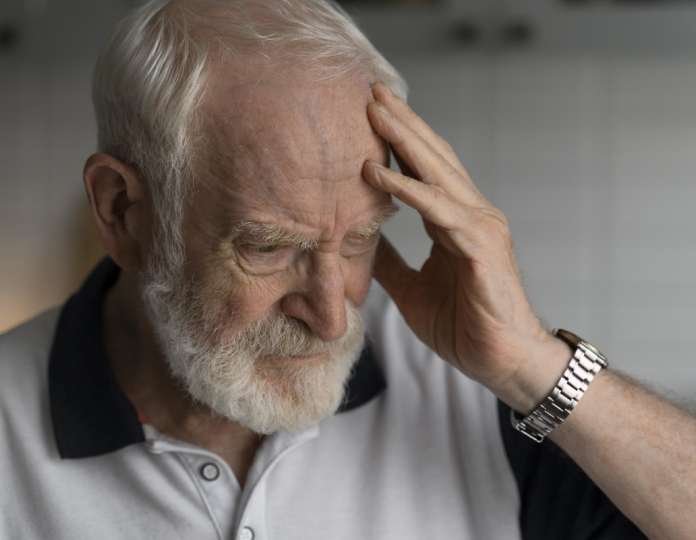Fundamentally, Neuro-aesthetics is an approach to aesthetics that draws on neurology as a technique of inquiry, in contrast to other approaches that have relied on psychological or philosophical models. Accordingly, Neuro-aesthetics investigates the neural mechanisms underlying aesthetic behavior. The idea to look into the brain mechanisms that underlie aesthetic behavior dates back to the seventeenth and nineteenth centuries, even if an actual experimental study on this topic has only recently begun to appear, perhaps twenty to thirty years.
The scientific knowledge of the relationship between the mind and brain underwent a broad upheaval during this time (Reed, 1997), which led some scholars, including Erasmus Darwin (1792), to hypothesize that mental states could be explained as physiological processes. Several aestheticians were then moved by this notion to propose that some elements of the aesthetic experience are physiological in nature.
Also Read: Art and Emotional Expression: How Aesthetics Impact Human Emotions
What is Neuro-aesthetics?
The study of the brain mechanisms underlying aesthetic behavior is known as neuro-aesthetics. We propose that some interactions with objects can be classified as “aesthetic.” What neuro-aesthetics aim to define these aesthetic roles and explore the neurological basis of these functions?
The psychological reactions that an object elicits in its maker or observer during interaction are referred to as its aesthetic function. These psychological processes are thought to have a biological brain basis and may include perceptual, sensory, cognitive, affective, evaluative, and social components, among others. We refer to things instead of artworks because our interactions with a far larger range of objects are defined by aesthetic processes.
For example, some of us have to search far and wide through our childhood memories to find the best ones in order to relive that happy and magical time. For some, it’s as simple as dancing the night away, enjoying a beautiful sunset, or listening to their favorite music.

The truth is that all of us have an innate sensitivity to the arts and aesthetic experiences. These are imperatives of evolution that are ingrained in our DNA as the basis of our humanity. Furthermore, they are essential to our learning, well-being, and health.
Brain and Aesthetics
There is considerably more to aesthetic experiences and their effects on the body and mind than just the accumulation of certain brain areas or functions. Increased connection is achieved by building deep and sophisticated neuronal bases and networks.
The process of perception, through which outside inputs enter the brain and undergo analysis via the networks of the senses and the brain’s perceptual systems, is one of the fundamental neurological mechanisms at work. Eric Kandel suggests that perception is determined by the interplay between our sensory and cognitive processes. We use our senses to take in the world, and our minds give it meaning. Each of us has a different aesthetic experience as a result of the interaction.
Also Read: A Comprehensive Examination on Philosophy of Mind
Researchers studying neuro-aesthetics are also examining how art-viewing and art-making activate systems of reward and the usual mode network. Feel-good neurotransmitters like serotonin, dopamine, and oxytocin are released by the reward system, resulting in pleasurable experiences and happy feelings. When we are immersed in aesthetic experiences or making art, we can observe that these pleasure areas in our brains light up.
The default state of the network, which was once only connected to daydreaming, is now connected to a wide range of activities essential to well-being and human connection. These include embodied cognition, which enables us to put ourselves in an artwork and experience the emotions the artist was feeling, as well as personal identification, empathy, sense of meaning, imagination, and creativity.
How Neuro-aesthetics Based Interventions Are Useful?
Numerous arts-based strategies may be effective in enhancing the quality of lifestyle, mobility, mental well-being, speech, memory, sensations, learning, and other areas, according to studies in the subject of neuro-aesthetics. For millions of people, such interventions may lessen the expense and stress of mental health problems, neurological conditions, and chronic diseases.

Music in Emergency and Trauma Medicine:
Promising research from the University of Florida has demonstrated the benefits of offering a preferred music intervention for the relief of stress and pain. A qualitative section outlining the best methods for utilizing music in trauma therapy is also included. Listening to music to reduce stress is not a novel concept. However, providing music in high-stress environments like trauma and emergency rooms has significant effects on healthcare.
Creative Art Therapies:
With a focus on examining the efficacy of creative arts therapy for veterans, service members, families, and caregivers, Creative Forces has made significant investments in biological and behavioral research. Art therapy has previously been shown in clinical studies to significantly influence PTSD and TBI recovery. It facilitates the vocal processing and interpretation of experiences by people impacted.
Also Read: What is Self-Actualization and 5 Ways to Achieve it
Clinically speaking, it promotes healing by lessening symptoms, including nightmares, flashbacks, and restless nights, and by raising pain, stress, and hypervigilance tolerance. It has been demonstrated that art therapy can transform violent conduct into constructive forms of self-expression. Providing patients with a means of social interaction, lessens the severe feelings of stigma and isolation that military members may experience as a result of the unnoticed wound of war.
Dance for Parkinson’s Disorder:
A severe neurodegenerative condition is Parkinson’s disease (PD). Numerous movement-related symptoms are brought on by it, such as tremors, stiffness, slowness, and postural instability. It also makes it difficult to do daily tasks requiring fine motor control, such as writing and buttoning clothes.

Through movement, innovation, and social connection, programs such as Dance for Parkinson’s Disease aim to address the disorder’s mental and physical aspects. For Parkinson’s disease, class participants reported benefits to their physical, emotional, and social well-being through Parkinson’s Quality of Life measures. More study is required, but early results indicate improvements in emotional, motor, and cognitive performance.
Although the influence of the arts has always existed, our knowledge of how they affect the brain is still relatively recent. It is now evident from research that engaging with or producing art initiates an active relationship among nerve cells that drives billions of changes influencing our feelings, ideas, and behavior. With their capacity to heal and empower, the arts are now superpowers thanks to this knowledge.
With fresh insights and medical research, neuro-aesthetics are expected to take a major step forward, redefining problem-solving in the twenty-first century. Advanced multidisciplinary research uses this perspective to examine some of the most challenging problems of our day, such as learning disabilities, addiction and pain management, chronic stress and related disorders, anxiety and mental illness, and decreased productivity and innovation. Because of its potential advantages, which cut beyond age, gender, class, ethnicity, and culture, the arts are a universal force.
References+
- • Magsamen S. (2019). Your Brain on Art: The Case for Neuroaesthetics. Cerebrum: The Dana forum on brain science, 2019, cer-07-19.
- • Skov. M., Vartanian. O. (2009). Neuroaesthetics. Baywood Publishing Company.
- • Gazzaniga M. S. (Ed.). (1984). Handbook of cognitive neuroscience. New York, NY: Plenum Press.













Leave feedback about this